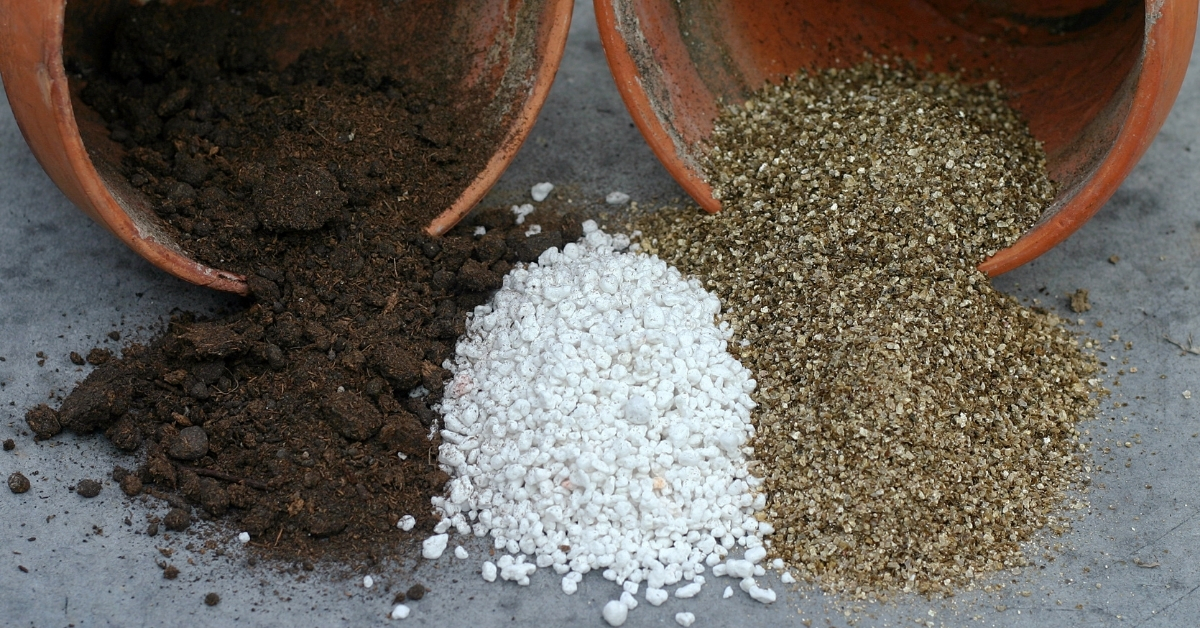Diy Horticultural Grit Vs Perlite You Must Look
Using vermiculite for plants like these could lead to root rot or death. Cuttings can also be rooted in perlite on its own.

What Is Perlite? How To Use It In Your Garden [Ultimate Guide]
If the soil dries out (which happens easily with soil block and plug trays) your gentle seedlings may wither and die.
Horticultural grit vs perlite. In essence, it is a form of soil conditioner. Grit is commonly made up of small stones. Perlite (different version of heated up mica) retains water but not nutrient and promotes aeration and soil drainage/lightness.
Horticultural grit is used for adding stability and. Although both perlite and vermiculite are good for seed starting, amending your soil with vermiculite will help it retain more moisture. These air holes provide oxygen to the plant roots while preventing root rot due to improved drainage.
Such stones are 1) extracted from the ground, 2) crushed, 3) washed to remove other soil content, and 4) placed in sturdy bags for delivery. Sand (many different kinds form course builders sand with variable grain to very fine spherical grains. While vermiculite can improve aeration to a degree by breaking up the soil and allowing air to flow through, it is not as good at providing aeration as perlite.
Horticultural grit is composed of small stones with sizes ranging from 2 to 4 mm. Like perlite, vermiculite is an effective soil conditioner that can loosen compacted soil, provide drainage, and hold three to four times its weight in water. Both are are good at holding water within em, but vermiculite.
Both perlite and vermiculite ores are heated to expand them into horticultural products, but the process for each is different. Both are porous rocks, which are perfect for moisture. Vermiculite tends to be used on smaller seeds which need heat and light to germinate.
It can also improve soil health and play its role in the proper development of plants and become a perlite substitute. Vermiculite (heated up mica) retains water and some nutrient and promotes aeration and soil drainage/lightness. I mix perlite into compost to improve drainage, but it tends to float to the top when watered so needs to have some compost on top to hold it down.
Both are are good at holding water within em, but vermiculite acts more like a sponge allowing for less aeration. Granite gravel and perlite not only look similar but also fulfill similar roles in soil mixes. Common questions and answers about perlite and vermiculite
Pumice has a higher water content than perlite, so you may need to increase the amount of fertilizer you use. So this is one of the best materials to improve aeration. Perlite is recommended for food crops as it will retain more water than pumice.
It gives aesthetic look to your. You can use pumice as a soil conditioner, too. Moisten the perlite and fill a polythene bag around a third full.
This is critical when starting seeds and growing tiny seedlings. Mix in perlite at a ratio of 50:50, fill the pots, water thoroughly and then allow the compost mix to drain for several hours before inserting your cuttings. Grit is a fungus gnats repellant.
I've used perlite and vermiculite on their own with hydroponics systems before. It's often used as insulation. Both vermiculite and perlite are used in the garden to prevent soil compaction, improve aeration and retain moisture.they’re also used in propagation of new plants and seed cultivation, as well as in indoor container growing, composting and on lawns.however, the way that each material retains water, and how much water is retained, makes each one.
Fine grit is usually used on seeds which need a long time to germinate and are left outside over winter. It also doesn’t contain any harmful chemicals. I've used perlite and vermiculite on their own with hydroponics systems before.
Pumice has a low level of nutrients, so you will need to fertilize your plants. Crushed perlite ore is rapidly heated to about 1472 to 1562 degrees. It would cost a fortune using perlite, and it isn't very effective in borders.
Pumice and perlite are both great for gardening. However, it is heavier than perlite. Lilies can stand quite a bit of wet though, and the more substantial planting you have in a border, the better the soil quality will be as it takes up a lot of moisture.
The downside is that horticultural grit is significantly heavier than perlite. I found that this perlite is very fine, similar to sand. Perlite has a soft foamy texture, while pumice is a hard volcanic rock.
Did it in late summer/autumn, and planted it the following spring. Mixing grit, perlite or vermiculite with compost is done to split up the compost to improve aeration and draining. It works similarly to perlite in the sense that it also creates air pockets within the soil.
Horticultural grit is composed of crushed rocks, mainly silica, limestone, quartzite, or a few others.

Knowing The Difference Between Vermiculite And Perlite?

Are Vermiculite and Perlite the Same?

What Is Perlite? How To Use It In Your Garden [Ultimate Guide]

PERLITE+VERMICULITE,HYDRO.GERMINATION,SEED START,SOIL,CUTTINGS,litre/oz

Perlite vs Vermiculite Comparison as Drainage Mediums Garden and Happy

Perlite Vs Vermiculite The Differences Revealed Spalding Bulb

PERLITE+VERMICULITE,HYDRO.GERMINATION,SEED START,SOIL,1litre//(0

Perlite in the Garden To Use or Not to Use?

Vermiculite vs Perlite Which Should You Use In Your Garden? I Love
The Niche Nursery Coarse Sand is Horticultural Gold.

What Is Perlite? How To Use It In Your Garden [Ultimate Guide]

Post a Comment for "Diy Horticultural Grit Vs Perlite You Must Look"